https://www.caandesign.com/les-haras-de-strasbourg-3-starred-michelin-restaurant-4-star-hotel-designed-jouin-manku/
Les Haras de Strasbourg: the 3-starred Michelin restaurant and 4 star hotel designed by Jouin Manku
“Les Haras de Strasbourg is a hotel and restaurant project unlike any other. Composed of a the four-star hotel and Michelin 3-starred chef Marc Haeberlin’s first brasserie, Les Haras presents an original solution to the question many provincial cities are facing : how to redevelop and harness the potential of their architectural heritage.

Managed by the Institute for Research into Cancer of the Digestive System (IRCAD), presided over by Professor Jacques Marescaux, the project allies architectural creativity and technological innovation, two particular areas of French expertise, with philanthropy, an unprecedented mix for a historic redevelopment project in France.

As conceived by Agence Jouin Manku, the interior design for the hotel and brasserie is characterised by its authenticity and modernity, a particular idea of luxury and comfort inspired by the equestrian world, restrained and subtle. Patrick Jouin and Sanjit Manku have expressed their vision of this former stud farm and historic site, in a design that is both elegant and simple.
Advertisement

As conceived by Agence Jouin Manku, the interior design for the hotel and brasserie is characterised by its authenticity and modernity, a particular idea of luxury and comfort inspired by the equestrian world, restrained and subtle. Patrick Jouin and Sanjit Manku have expressed their vision of this former stud farm and historic site, in a design that is both elegant and simple.
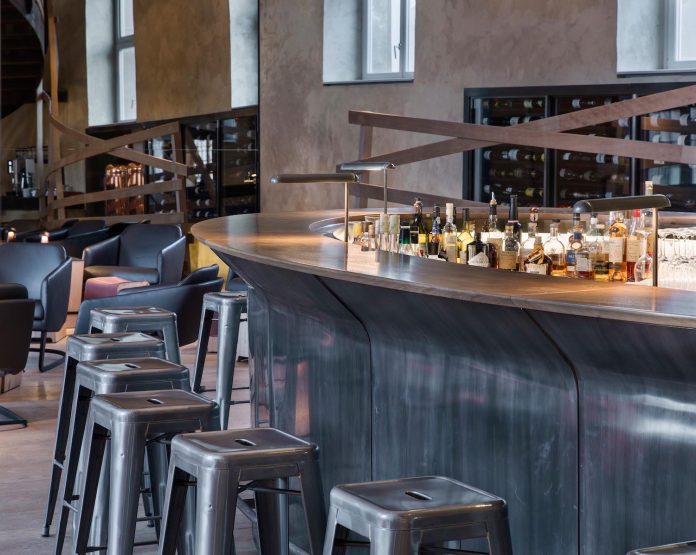
The restoration and conversion of Les Haras de Strasbourg, a site charged with history at the heart of the city.
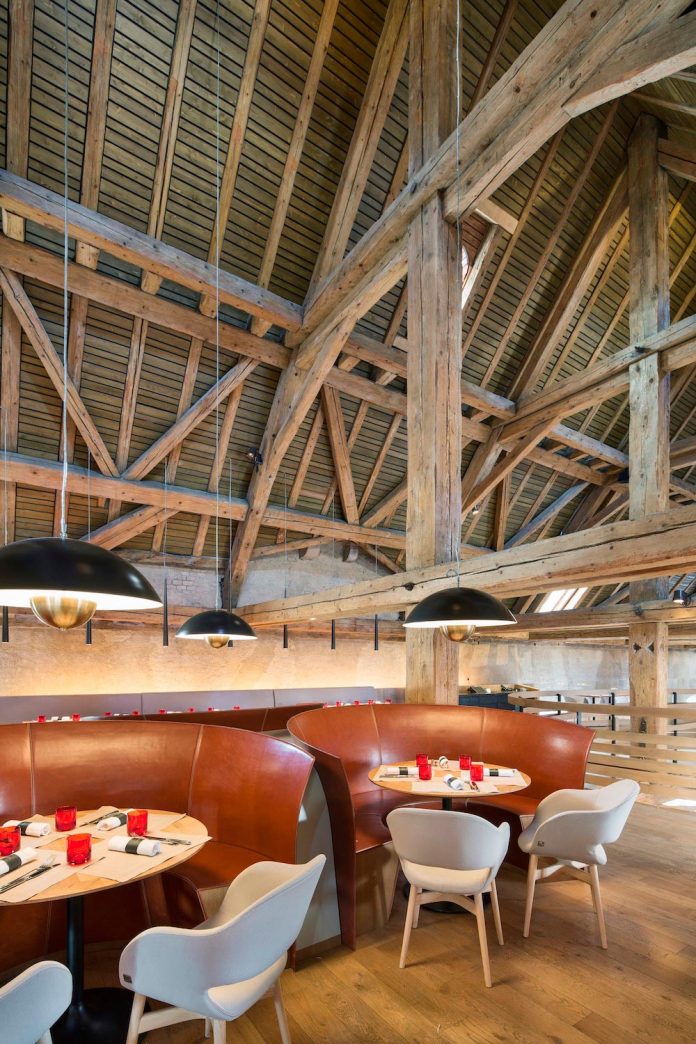
A. Historical background
Built in the mid 18th century, the former National Stud in Strasbourg constitutes a remarkable group of buildings of which the facades, the roofs, the monumental entrance gate and the grand stables built in the classical style, are all classified historic monuments. Founded in 1621, the city’s Equestrian Academy was initially a riding school for young well-to-do French and Germans students from the University of Strasbourg.
Built in the mid 18th century, the former National Stud in Strasbourg constitutes a remarkable group of buildings of which the facades, the roofs, the monumental entrance gate and the grand stables built in the classical style, are all classified historic monuments. Founded in 1621, the city’s Equestrian Academy was initially a riding school for young well-to-do French and Germans students from the University of Strasbourg.
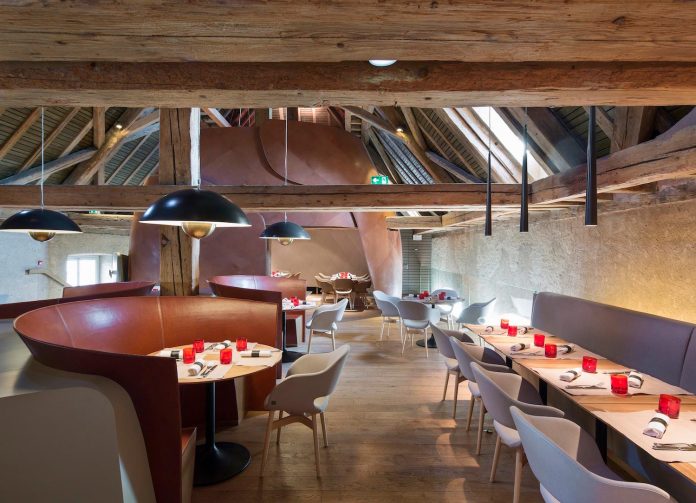
Headquarters of the City’s Riding Academy from 1752, the Haras Royal, the Royal Stud, moved onto the site in 1756, at the request of the Marquis d’Argenson, then director of the national studs. Closed during the French Revolution, the Riding Academy reopened under Napoleon I, only to close again in 1823. Temporarily reopened in 1830, it closed definitively in 1845; only the National Stud continued to occupy the current site. In 2005, the stud’s horses finally left these prestigious buildings for the last time.
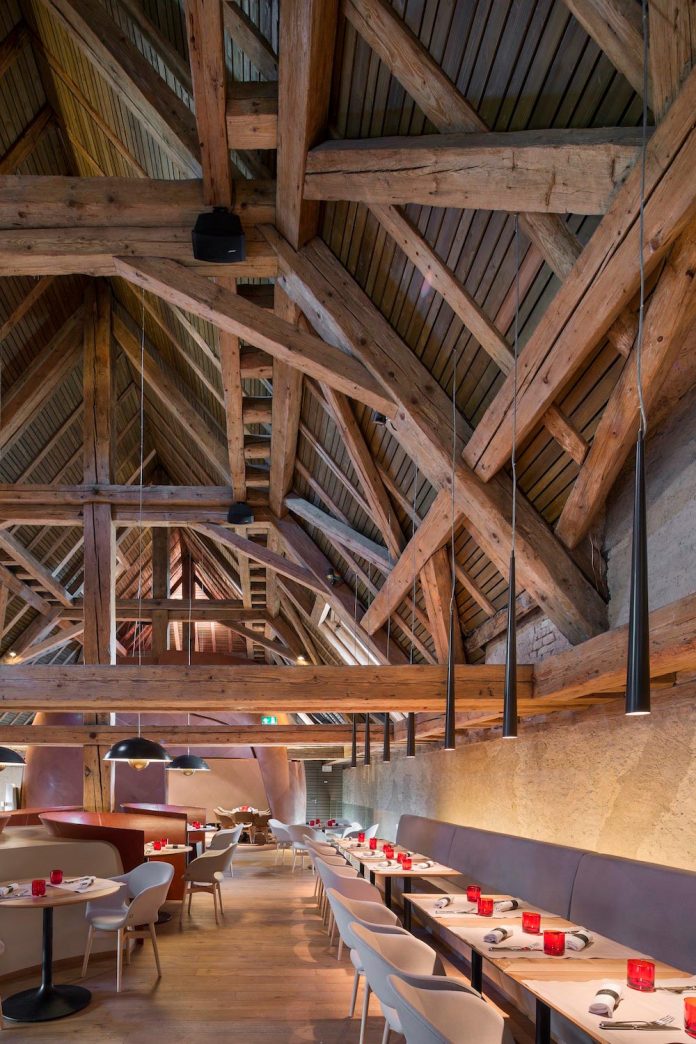
In 2009, the City of Strasbourg entrusted the renovation and management of this site to IRCAD under the terms of a 52-year full repairing and insuring lease (UK) or net lease (US). In 2010, IRCAD began restoring the site under the auspices of the French Ministry of Culture, overseen by the Direction Régionale des Affaires Culturelles, the Architecte des Bâtiments de France, and the Conservateur Régional des Monuments Historiques.
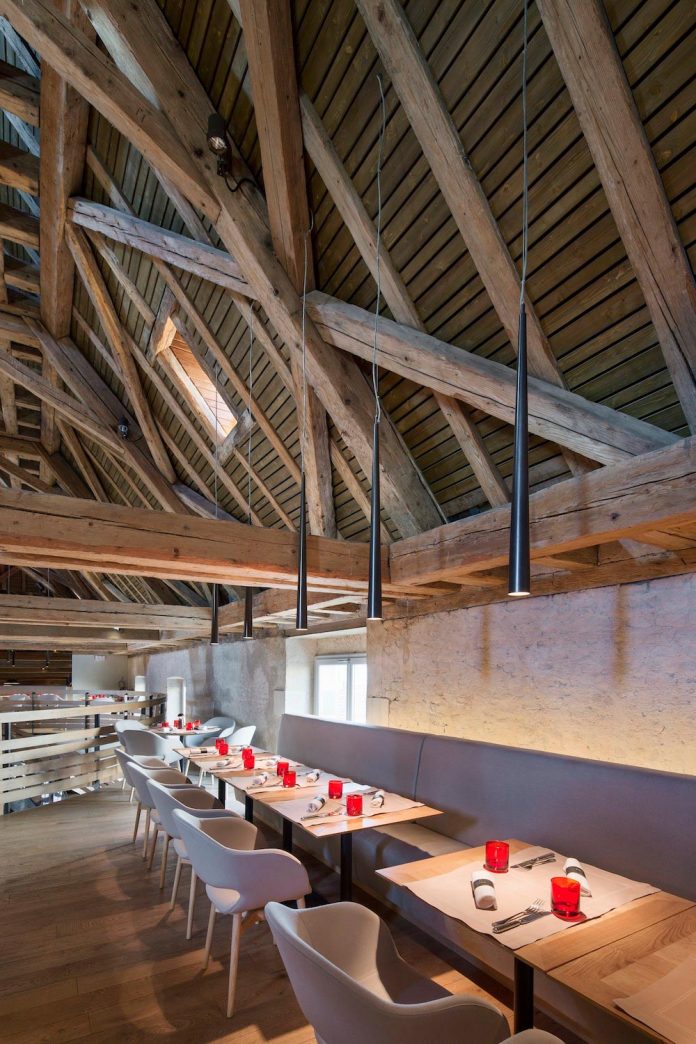
B. The architecture of Les Haras, the former National Stud, Strasbourg
Les Haras occupies an important position in the city of Strasbourg. Located in the Petite France area of the city, its buildings follow the line of the city’s medieval walls, close to the historic ‘Hôpital civil’. The building has three wings : the first includes the original grand entrance to Les Haras and lodgings for the master equerry.
Les Haras occupies an important position in the city of Strasbourg. Located in the Petite France area of the city, its buildings follow the line of the city’s medieval walls, close to the historic ‘Hôpital civil’. The building has three wings : the first includes the original grand entrance to Les Haras and lodgings for the master equerry.

The second wing, perpendicular to the first and set back from rue des Glacières, formerly housed the stables and manege. the third building, alongside rue des Greniers, originally housed the Royal Stables. The group of buildings has been subject to a number of alterations over the years, which can easily be seen in the architecture. It was the construction of the Royal Stables at Les Haras that enclosed the courtyard on its north side. A veritable horse hotel, the building accommodated up to 32 stallions.
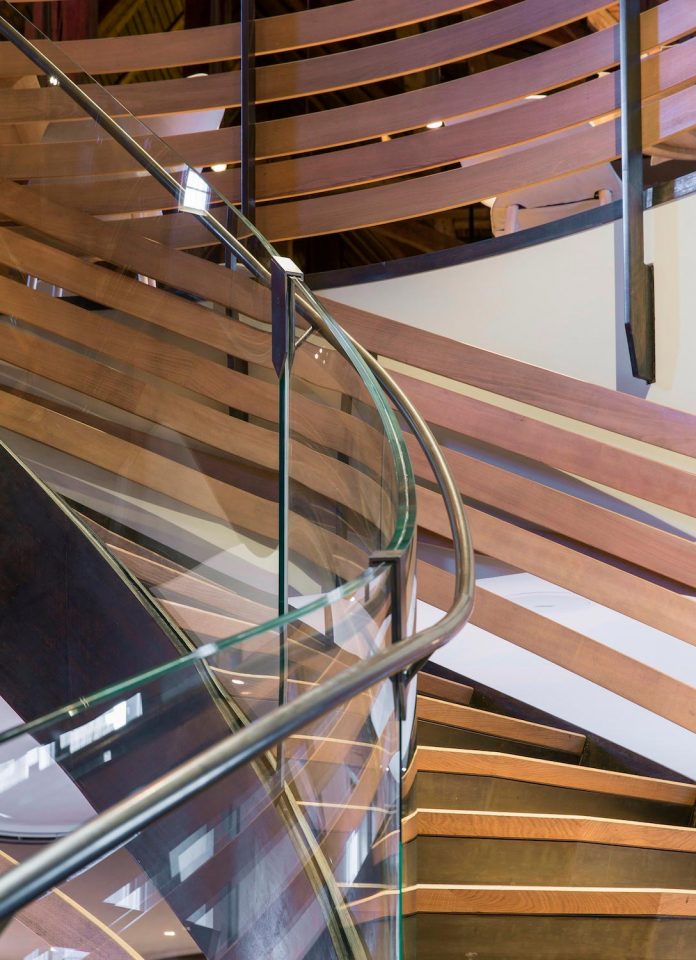
The generous single-storey pink sandstone façade is characterised by six full-height moulded arches that frame a central portico. In front of these grand stables stretched the open air riding school, essential for training the riders. In 1752, the first buildings for the National Stud were completed; the indoor school, the stables and the lodgings were all the work of architect Jacques Gallay.

C. Les Haras today: a place of contrasts, showcasing French expertise
It was due to its location, ideally situated right next to Strasbourg University Hospital and IRCAD’s headquarters, that the idea for this unusual project came about. With more than 4000 surgeons travelling annually from all corners of the globe to receive training in the latest non-invasive techniques using 3D imagery, IRCAD was already a showcase for French expertise.
It was due to its location, ideally situated right next to Strasbourg University Hospital and IRCAD’s headquarters, that the idea for this unusual project came about. With more than 4000 surgeons travelling annually from all corners of the globe to receive training in the latest non-invasive techniques using 3D imagery, IRCAD was already a showcase for French expertise.
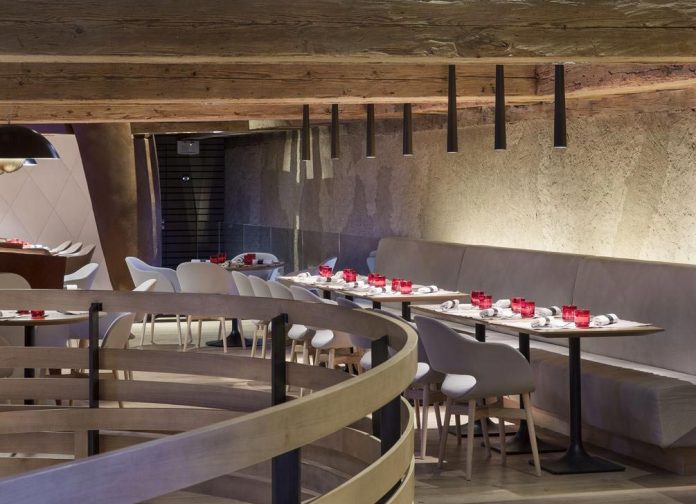
Les Haras represented an ideal location to accommodate not only tourists but also some of the 4000 surgeons that visit IRCAD annually. Once home to the king’s horses and a renowned Academy, with its grandiose architecture and unusual spaces, the site presents an attractive image of the history of France. The theme of excellence is the thread that links all the participants in this new project : Marc Haeberlin, Michelin three-starred chef, Agence Jouin Manku, internationally renowned for their creative projects for the most high-profile clients, the architects Denu et Paradon and Jean-Pascal Scharf, the respected Strasbourg hotelier whose experience ensures the successful management of this four-star hotel project.
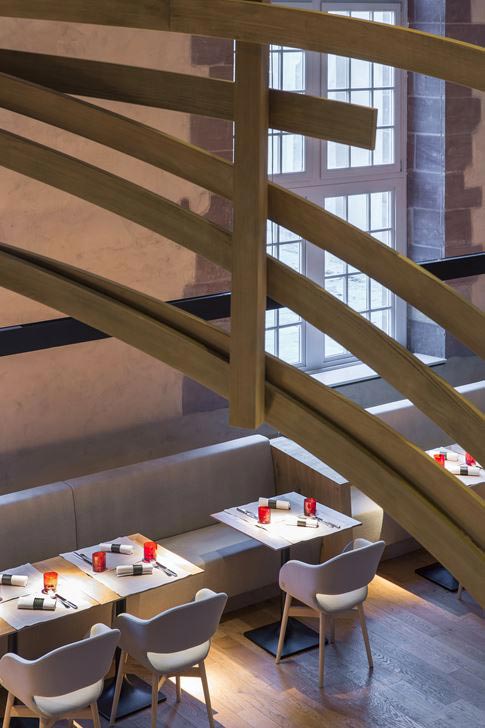
Each participant was won over by the ambition and the philanthropic slant to this project : the site will also house a ‘bio-cluster’, a hub for biotech start-ups, housed and mentored by IRCAD. In addition, the revenue generated by tourism on the site will help to finance IRCAD research. Architects Denu et Paradon have restored the site paying particular attention to the structure and envelope. The challenge for Jouin Manku was to make this site modern and sophisticated while respecting its important architectural heritage and avoiding pastiche.

D. The creative approach to the project
Patrick Jouin and Sanjit Manku’s aim for the overall project was to come up with a wholly contemporary response to the historic site with which they had been entrusted : a project with an appropriate and pared back aesthetic, whose every detail referenced modernity, sophistication and comfort. The buildings’ beautifully restored majestic facades project a perfect image of 17th century architecture and speak of the nobility of the stallions once stabled in the stud.
Patrick Jouin and Sanjit Manku’s aim for the overall project was to come up with a wholly contemporary response to the historic site with which they had been entrusted : a project with an appropriate and pared back aesthetic, whose every detail referenced modernity, sophistication and comfort. The buildings’ beautifully restored majestic facades project a perfect image of 17th century architecture and speak of the nobility of the stallions once stabled in the stud.

Jouin Manku chose to create a marked contrast between the exterior and interior of these buildings switching from the classical grandeur and history of the facades to a decisively contemporary interior. They have also employed many subtle references to the world of horses and stables conveying elegance and comfort in an understated way – without succumbing to an overly literal reference to the equestrian world, it is nonetheless omnipresent.”

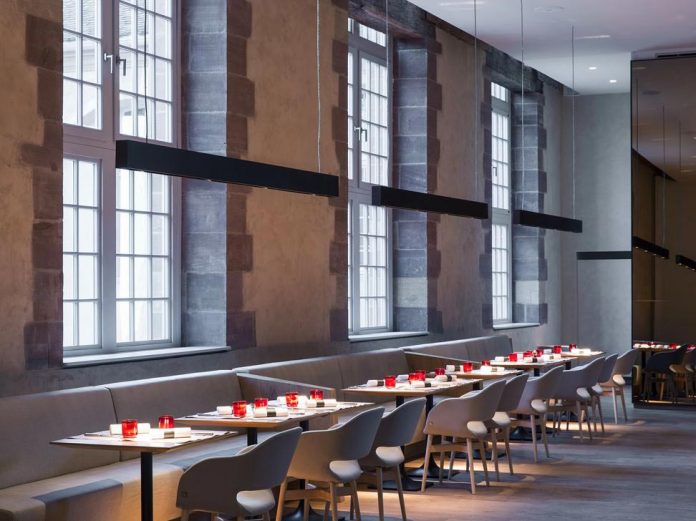




























Thank you for reading this article!
沒有留言:
張貼留言